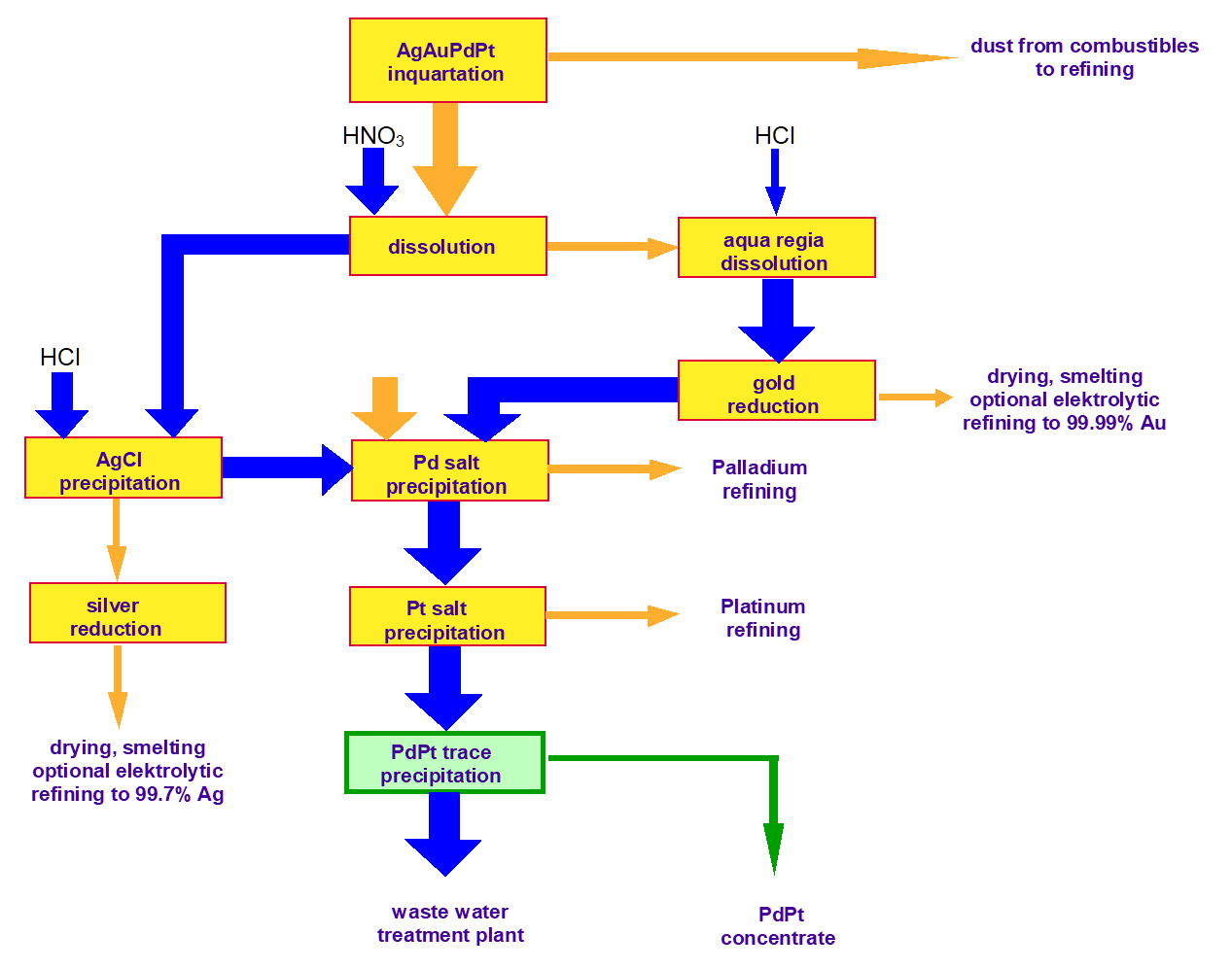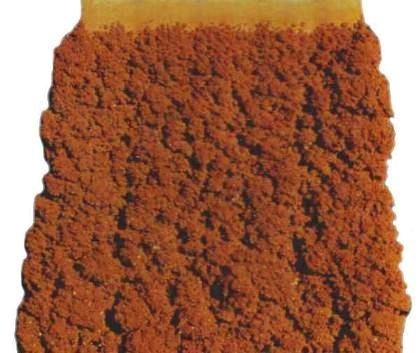
aqua regia gold refining
for low cost separation of gold, silver, platinum and palladium
from base metals in metallic high grade alloys, concentrates and from heterogeneous scrap

blue arrows or lines identify liquids, brown solids; the weight of lines and arrows is an indication for relative solid or liquid mass flow rate in question on a logarithmic scale.
Feed
The main focus of the aqua regia process and its many derivations
is the refining of metallic gold scrap as well as complex
heterogeneous high grade metal-ash scrap. Typical feed is mine gold,
dental scrap,
jewellery scrap, selected
electronic scrap fractions.
Inquartation
For the hydrometallurgical separation
of gold and silver it is necessary to dilute the metallic feed to an
extent that all of the silver in the resulting alloy will be soluble
by nitic acid whereas gold is left in the residue. Depending upon the
process metallurgy the residue appears as a sponge or an easily
filtering and handable packed bed. Different metals may be used for
the inquartation based on the process strategy and environmental
concern of the refiner.
The noxious fumes challenge
The appearance of noxious fumes during the processes of
dissolution and gold reduction is a major impact of the aqua regia
gold refining system and may cause large investments in NOx scrubbers
which may even exceed the investment into the rest of the process by
far if the process has not been designed carefully. But the problem
of NOx emissions during dissolution may be reduced to a very low
extent by means an appropriate reactor design whereas the emission of
NOx from the reduction of excessive nitric acid during gold reduction
may be very much limited by chemical pretreatment.
Platinum
and palladium coprecipitation
If platinum and palladium is
present in the feed they are separated commonly by precipitation from
the combined filtrates/decantates of AgCl precipitation and and gold
reduction. (This is not the best but the simplest process). But
precipitation of platinum and palladium from aqua regia liquors is
not quantitative ! Many pgm refiners have developed their own inhouse
processes to recover the pgm traces values - more or less acceptable
in terms of cost. The optimum process is a platinum
palladium trace coprecipitation
by a selective organic ligand avoiding salination and/or
contamination of the spent liquor. (The precipitate is recycled to
incineration and further pgm refining).
HEV offers this process
and the chemical.
Refined gold
The primary gold
product of the aqua regia separation process above is gold sponge
(purity >99.95% Au). If fine gold (purity >99.99% Au) is
requested from the local market gold sponge is molten to anodes and
electrolyzed. Below the typical "cauliflower" shape
precipitation of 99.99% gold onto the surface of the cathode in an
electrowinning cell (Wohlwill type) is shown (optimal process
conditions). Due to the highly porous surface of the material the
cathodes obtained need additional treatment to remove spent
electrolyte and incorporated anode sludge.
Direct
electrolysis of gold
If the gold content of a metallic scrap
is high and the impurity level of silver, platinum, palladium and
base metals is low it is reasonable to directly electrolyse gold
instead of aqua regia pretreatment followed by electrolysis.

HEV
· D-63571 Gelnhausen · Rhönstraße 106 ·
phone 0049-6051-968928 · fax -968929
email :
HEV@halwachs.de
· internet : www.halwachs.de